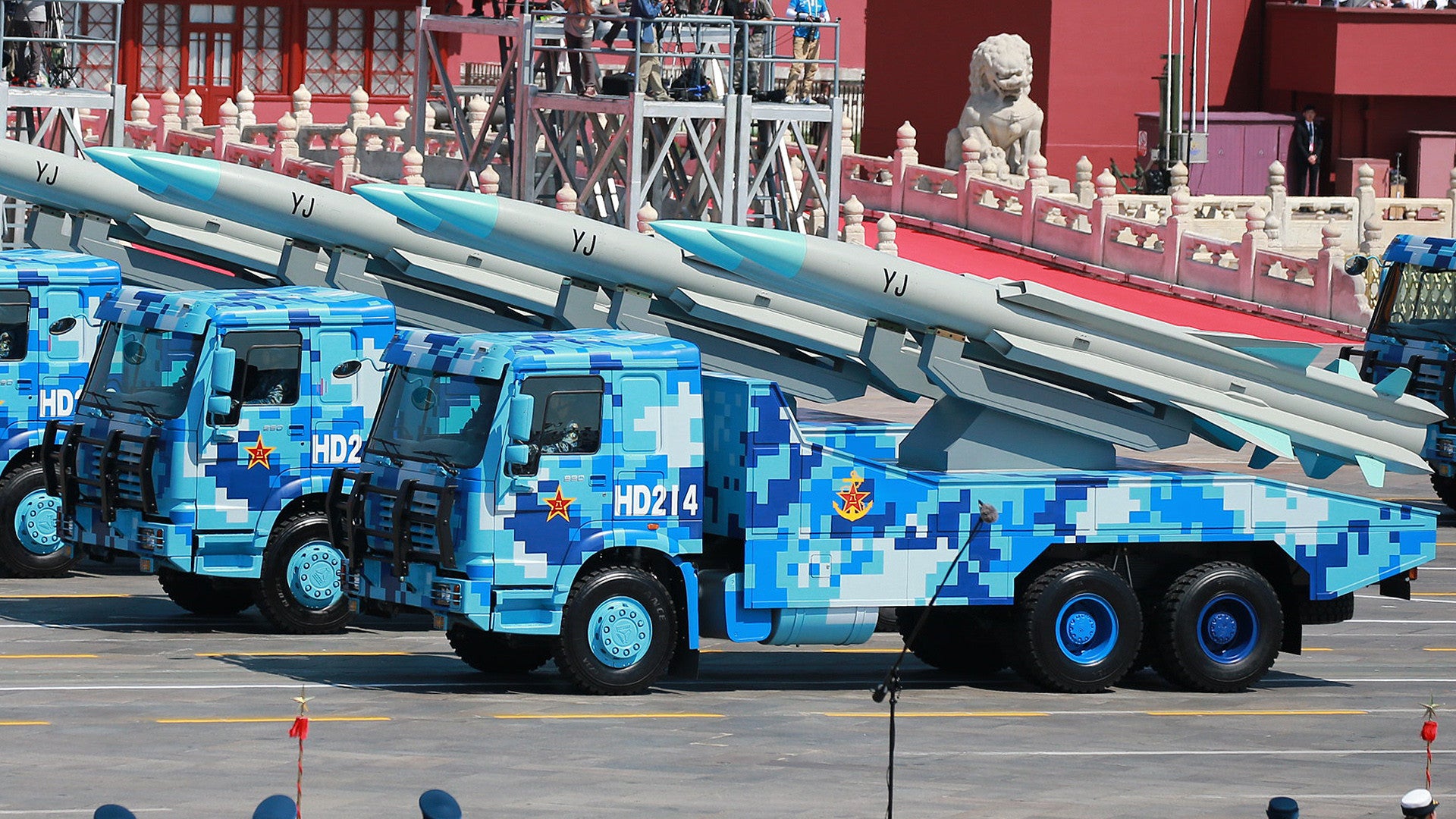The U.S. government has sharply criticized China for establishing new air and anti-ship defenses on a number of man-made outposts in the disputed South China Sea. Something we at The War Zone have warned has been increasingly inevitable for years, these developments are the latest example of China’s long-standing determination to limit the ability of foreign militaries, especially the United States, to operate in the region and suggests the country may be adopting an assertive foreign policy more broadly.
On May 2, 2018, CNBC, citing sources with knowledge of U.S. intelligence reports, reported that China had deployed HQ-9B surface-to-air missiles and YJ-12B anti-ship cruise missiles on Fiery Cross Reef, Mischief Reef, and Subi Reef. China first began artificially expanding all three of these locations in the hotly disputed Spratly Islands, among others, in 2014 and has since transformed each one into outposts capable of sustaining various ground, air, and naval forces.
A significant escalation
“We’re well aware of China’s militarization of the South China Sea,” White House Press Secretary Sarah Huckabee Sanders told reporters on May 3, 2018. “There will be near-term and long-term consequences.”
“We have been very vocal about our concerns about them militarizing these artificial islands,” Dana White, the Pentagon’s chief spokesperson, also said on May 3, 2018, in a separate press conference. “China has to realize that they have benefited from the free navigation of the sea and the U.S. Navy has been the guarantor of that.”
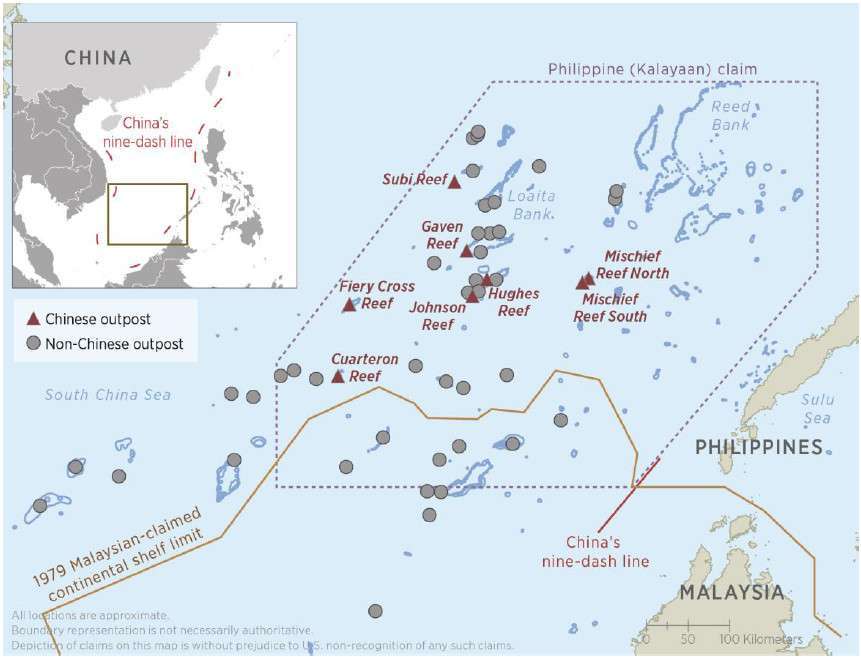
Earlier, an unnamed Pentagon spokesperson had told CNBC’s said China’s latest additions “will only serve to raise tensions and create greater distrust among [other] claimants” in the South China Sea, but that’s putting things mildly. If the specific details are true, the addition of the HQ-9Bs and YJ-12Bs would represent a significant challenge to any military force attempting to operate in the area during a crisis.
A long-range surface-to-air missile system, similar in size and capability to Russia’s S-300 series, the HQ-9 represents one of the Chinese military’s most capable air defense weapons. It is reportedly capable of engaging aircraft, including low-flying manned and unmanned types, as well as cruise missiles. According to Jane’s, the B variant has a dual mode seeker with semi-active radar and infrared homing capabilities, making it more flexible against a variety of targets, and much harder to defeat using countermeasures.
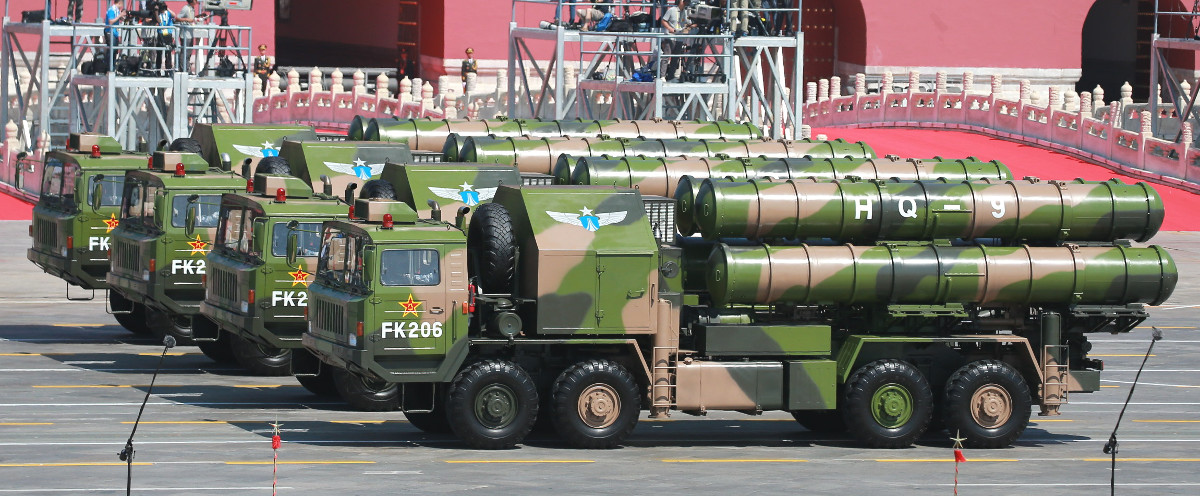
The YJ-12B, a heretofore unknown version of the air-launched YJ-12, is a supersonic land-based anti-ship cruise missile. At least visually, the design appears to be a derivative of the Soviet-era Kh-31.
The B nomenclature suggests that this is a further improved version of the previously reported YJ-12A ground-launched type. Already reportedly capable of making evasive maneuvers to avoid close-in defense systems, this variant could feature additional counter-countermeasures.
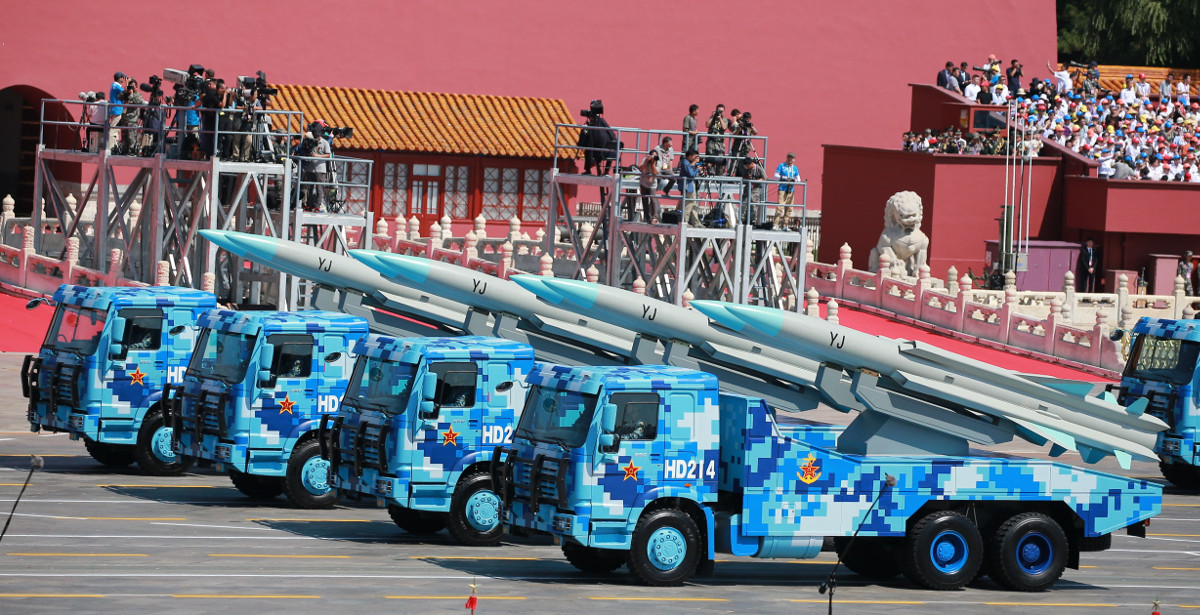
The HQ-9B has an approximate range of more than 120 miles, depending on the altitude of the target, while the air-launched YJ-12 has a maximum range of between 200 and 250 miles. The ground-launched YJ-12B could have an additional booster to extend its range, as well.
Of course, this isn’t the first time China has deployed HQ-9s to the South China Sea. In 2016, they placed the surface-to-air missile systems on Woody Island further north from the three reefs in question. They also previously added shorter-range guns to all of these locations.
But together, these weapons form a much more significant buffer around the three reefs, which occupy an especially strategic position between other countries with claims in the South China Sea, including Malaysia, the Philippines, and Vietnam. During an actual conflict, it could easily present a barrier to other foreign forces attempting to enter the area and that would appear to be the point.
There’s nothing to suggest that they couldn’t do the same on other outposts in the South China Sea, as well. The air- and anti-ship defenses could help protect follow-on deployments of even longer range weapons, including medium- and intermediate-range ballistic missiles.
China’s DF-26, which is officially entered service in April 2018, is capable of attacking targets as far as away as Guam from the Chinese mainland. A subvaraint can also reportedly engage large ships, as can the existing DF-21D. Positioning either of these weapons inside the South China Sea would increase the country’s ability to challenge foreign naval movements, in particular, U.S. Navy carrier groups, across a much wide swath of the western Pacific.
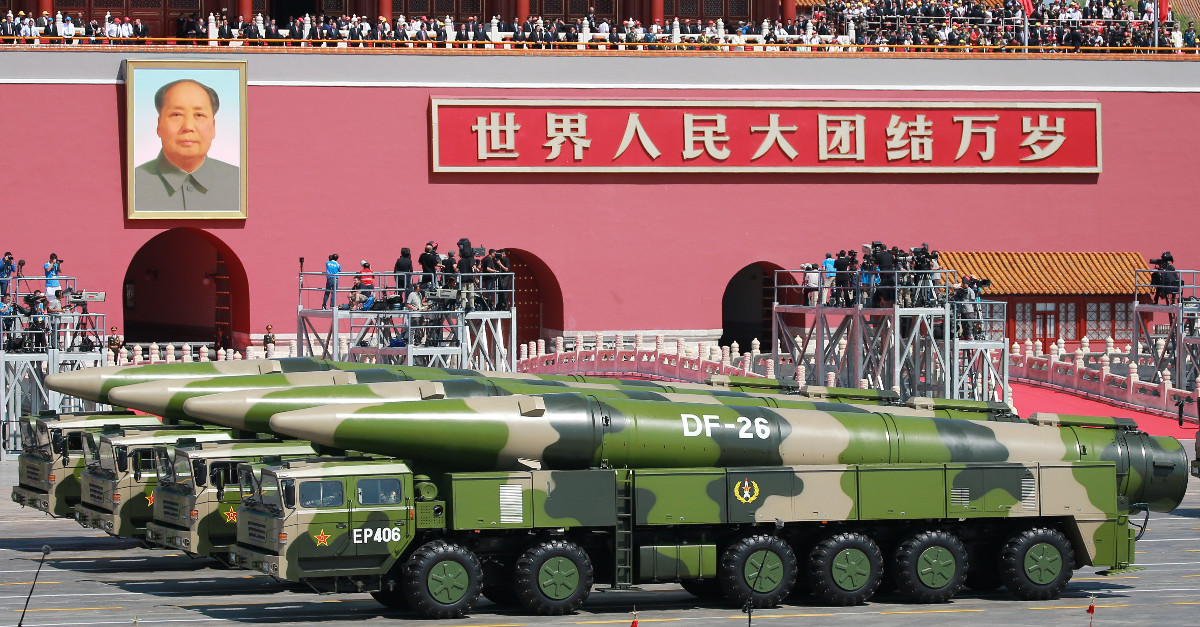
Clear policy
But as we at The War Zone have noted for years, these new developments are not only not surprising, they have been an almost guaranteed outcome of the Chinese land reclamation project in the South China Sea and inaction early on by the United States to challenge that work. In 2015, then at Foxtrot Alpha, our own Tyler Rogoway wrote:
China is taking desolate reefs among the Spratly Islands and building them into man-made bases. Some see this as no more than a navigational headache and a regional issue with little impact. Others, however, believe it’s a much more subversive activity, giving China the ability to claim a vast economic exclusion zone where it could control shipping, fishing, energy production, and even air travel over one of the busiest transportation corridors in the world.
Some of China’s newly built islands are rumored to eventually become highly defended stationary “aircraft carrier battle groups” where they could house fighter aircraft, long range sensors, and missile systems – both of the surface-to-surface and surface-to-air variety. In doing so, China would be in the process of creating a fortress-like network of sea bases where it could project power and literally control the flow of a large portion of the world’s shipping.
…
In actuality, China has every reason not to make a deal to share this highly strategic territory with its neighbors, including energy, fishing, shipping and air travel control, and will most likely just rely on the passive threat posed by its massive military as a deterrent against aggression and intervention. The only way to really have a shot at reversing what could be the biggest and most volatile territorial dispute of our time is to engage with China directly on the issue now, before construction on these islands is complete.
Considering how distracted the Obama Administration is with a whole slew of other issues, both external and internal, it’s doubtful that this will happen. Meanwhile, the play clock is ticking down, and China is well aware of this.
In September 2015, China’s President Xi Jinping appeared to make a pledge not to do any of this after meeting with U.S. President Barack Obama. And while it may now seem that this promise was particularly hollow, it is important to consider the language in the appropriate context.
“Relevant construction activity that China is undertaking in the Nansha Islands does not target or impact any country and there is no intention to militarize,” Xi declared in 2015, using the Chinese name for the Spratlys. But in the same remarks, he added that “we have the right to uphold our own territorial sovereignty and lawful legitimate maritime rights and interests.”
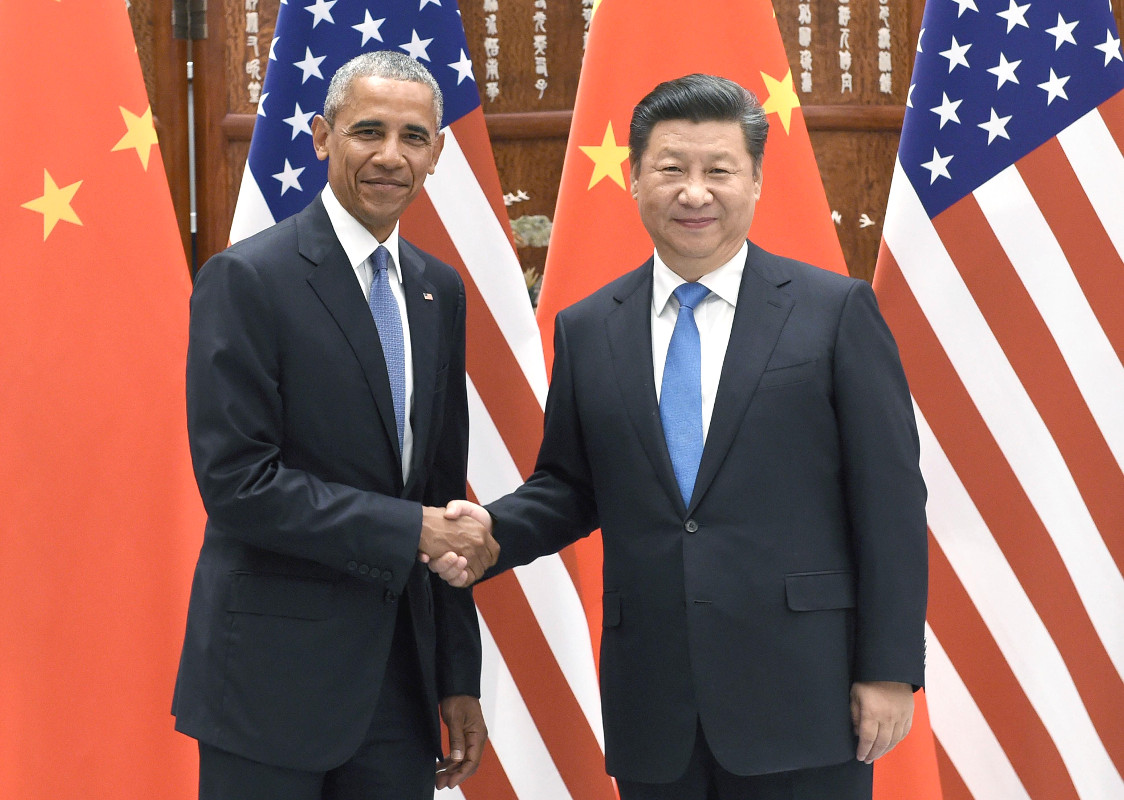
The Chinese have staked a claim that effectively encompasses the entire South China Sea. While the latest missile deployments definitely reflect an aggressive stance toward other countries in the region, China sees its activities there as legitimate “defensive” moves to protect its sovereignty territory from their claims.
Other countries in the region, as well as international courts and regulatory bodies, have similarly challenged the validity of China’s claims in the South China Sea. Notably, in 2016, an international tribunal at The Hague sided with The Philippines in a specific dispute over Scarborough Shoal, further to the northeast of the three newly armed reefs, and declared that Chinese authorities had no long-standing historical claim to the region.
China, not surprisingly, rejected that decision. However, the Philippines’ present firebrand President Rodrigo Duterte has largely dropped the issue as part of efforts to improve relations with the Chinese government, eliciting a pledge from Xi’s government not to expand in Scarborough, at least as long as he’s in office.
It’s also worth noting that in 2015 the United States said it had reached a deal with China to stop dangerous intercepts of American intelligence, surveillance, and reconnaissance aircraft, including over the South China Sea. The aggressive encounters have continued, even after the Navy decided to add camera pods on its EP-3E Aries II intelligence aircraft to record the incidents. In May 2017, a People’s Liberation Army Air Force Su-30MKK Flanker buzzed a WC-135C Constant Phoenix atmospheric sampling plane as it transited over the East China Sea.
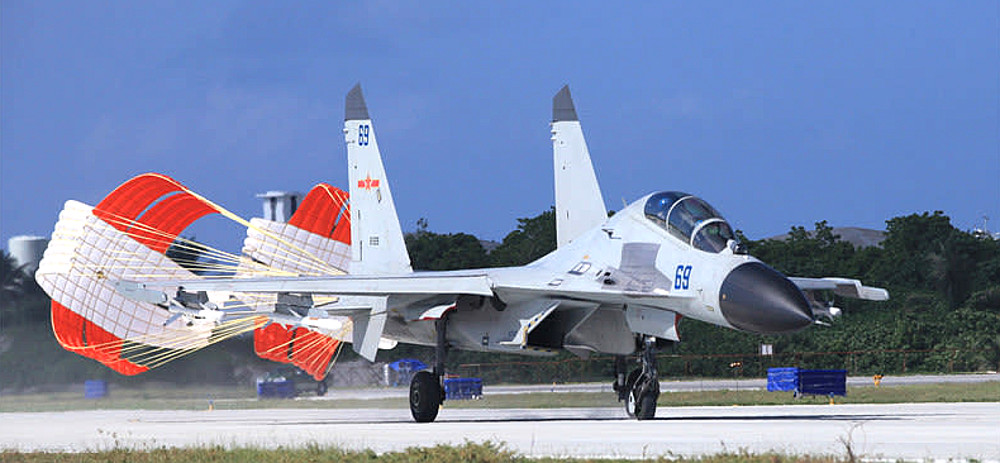
A de facto claim
On a broad level, China has steadily developed a variety of mechanisms, including military deterrents and regulatory challenges, to enforce its claims in the South China Sea. The new missiles on the three reefs can only help add to this de facto boundary regardless of any international criticisms or legal decisions.
The move could prompt other claimants to reinforce their own claims – Vietnam has already moved Israeli-made EXTRA artillery rocket system within range of China’s outposts – but short of an all-out conflict, it’s not clear what any party, of their allies, such as the United States, could necessarily do to check the flow of more Chinese military equipment into the region. In adding the surface-to-air and anti-ship missiles, authorities in Beijing are making it more difficult to for its opponents to contemplate any sort of armed intervention, as well.
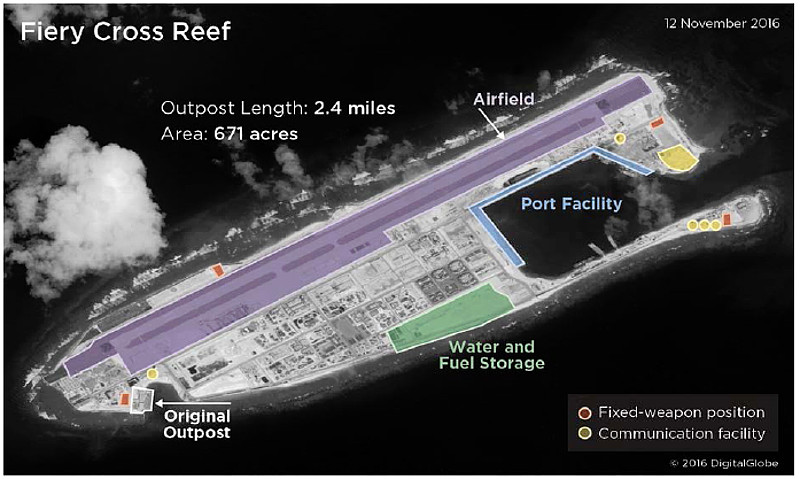

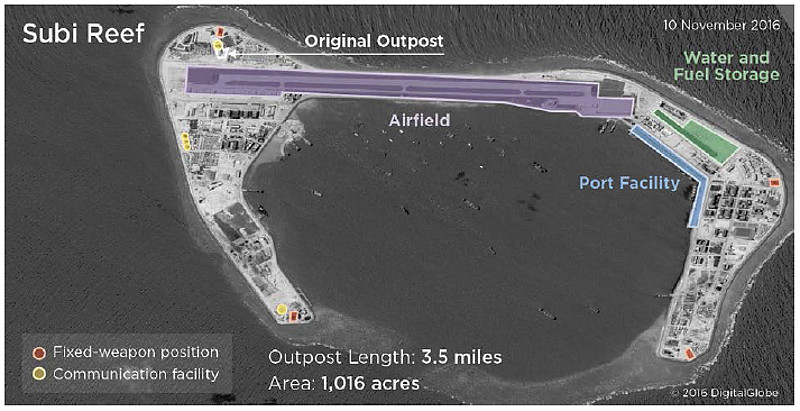
And the deployment of the new missiles is only the most recent in a string of Chinese anti-access and area denial developments in the region, too. In April 2018, The Wall Street Journal reported that China had installed electronic warfare systems on at least some of its outposts in the region.
Since at least 2013, the Chinese have reportedly been interested in jamming U.S. military aircraft to keep them out of the South China Sea, but the recent report suggested that China was more actively targeting American military aircraft, possibly interfering with their radars, navigation equipment, or communications systems. Shortly afterward, GMA News, a Filipino outlet, provided additional evidence of this, citing an unnamed U.S. Navy aviator.
“[T]he mere fact that some of your equipment is not working is already an indication that someone is trying to jam you,” the individual reportedly told GMA News. “And so we have an answer to that.”
This is on top of expanding underwater listening posts and sensor nets, as well as increased routine air and naval patrols and training exercises. In March 2018, dozens of People’s Liberation Army Navy ships, including its sole operational aircraft carrier, the Liaoning, took part in an especially large show of force off Hainan Island. All of this provides a very visible demonstration of China’s determination to enforce its policy preferences in the region.
Branching outward
In addition, the Chinese have begun more actively operating in the seas and air in other disputed areas, such as areas Japan claims in the East China Sea. China is also looking to expand its network of overseas bases that could allow it to better project power on an international level, with reports of potential developments in Vanuatu, close to Australia and the Maldives, in India’s traditional sphere of influence. Expanded naval cooperation with long-time ally Pakistan is another possibility and China is looking into developing additional partnerships in the Indian Ocean and in East Africa.
And as the news of China adding additional weaponry to its outposts in the South China Sea emerged, the U.S. military accused them of harassing American aircraft flying in the East Africa country of Djibouti, which hosts a major American base, with blinding laser “dazzlers.”
The attacks had left two aviators with temporary injuries and could be a sign of growing tensions between the two parties in that region. In 2017, these Chinese opened their own military facilities less than a mile from the U.S. military’s Camp Lemonnier in the highly strategic country.
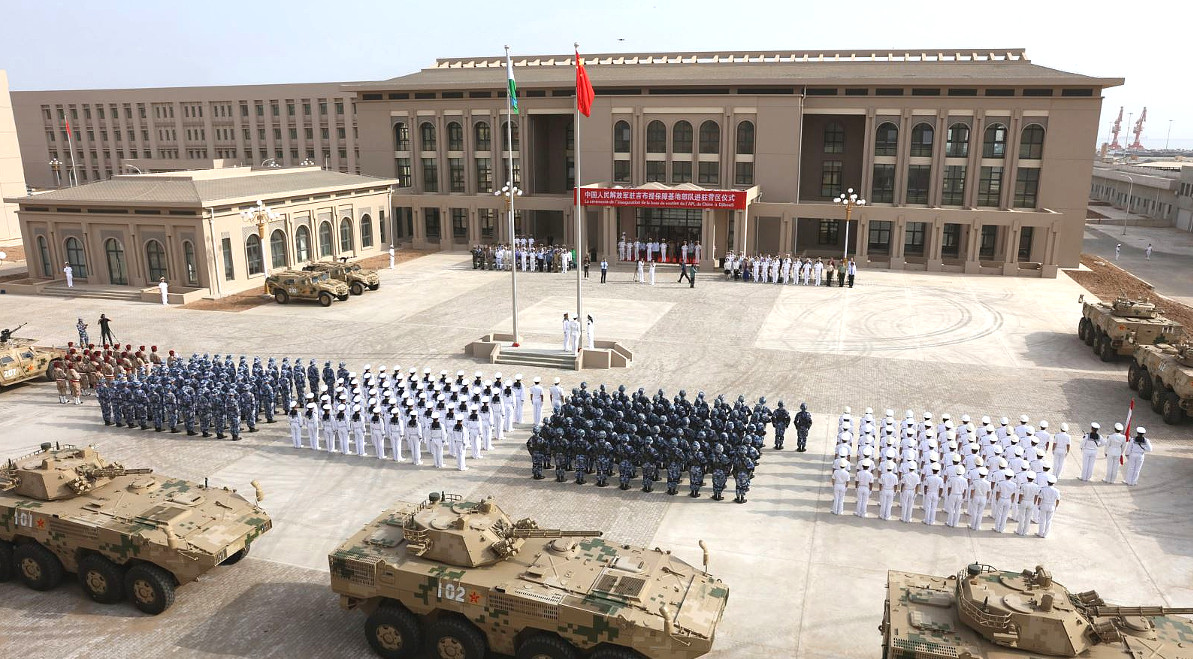
“U.S. Africa Command views security and access to Djibouti as a top priority,” U.S. Marine Corps General Thomas Waldhauser, commander of U.S. Africa Command, which manages operations in Djibouti, told legislators in March 2018. “Consequently, we continue to monitor this [Chinese] development to ensure U.S. interests are not deterred.”
Having added facilities in foreign countries, or established agreements to use their deepwater ports, makes perfect sense if China wants to be able to conduct long-range naval operations in the future, especially using the carrier battle groups that it is in the process of building. The PLAN has already built a dock that is able to accommodate Liaoning on its own Hainan Island in the northern end of the South China Sea. The carrier and its escorts will almost certainly be regular guests at foreign ports of call where China is looking to expand its influence in the future.
“China’s impressive military buildup could soon challenge the United States across almost every domain,” U.S. Navy Admiral Harry Harris, head of U.S. Pacific Command and nominee for Ambassador to South Korea, told lawmakers in February 2018. “China’s intent is crystal clear. We ignore it at our peril.”

Few ways to respond
But as noted, short of taking actual military action, it’s not clear what the United States might be able to reverse the situation in the South China Sea. Adding additional capabilities to pierce through Chinese anti-access and area denial screens, such as advanced low-observable aircraft and stealthy stand-off weapons, hypersonic weapons that can strike at extreme distances with little warning, and improved surface, air, and space-based sensors will help the U.S. military keep its qualitative edge in any potential conflict.
Having those systems in place does little to challenge China’s physical possession of large swaths of the region, though. Freedom of navigation patrols at sea and in the air through the South China Sea also demonstrate that the United States and its partners do not accept the Chinese claims, but again have little impact on military activities in places such as Fiery Cross, Mischief, and Subi Reefs.
U.S. President Donald Trump and his administration already have a complicated relationship with China more broadly, both lauding its help in bringing North Korea to the negotiating table and sanctioning its citizens and businesses for enabling the regime in Pyongyang. Trump, who routinely praises his Chinese counterpart Xi Jinping, has also pushed for major trade restrictions on Chinese imports and exports, which has prompted threats of retaliation from officials in Beijing. In theory, diplomatic and economic pressure might produce some concessions from Xi’s government, but China has so many partners internationally that it could be especially difficult to isolate them in any way.
In the meantime, At least when it comes to the South China Sea, the additional missiles only make it more difficult for the United States and other countries in the region to challenge China’s aspirations. And that’s exactly the plan.
Contact the author: jtrevithickpr@gmail.com
